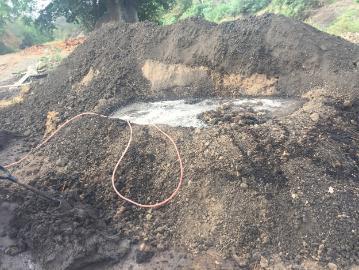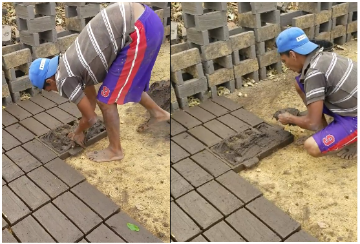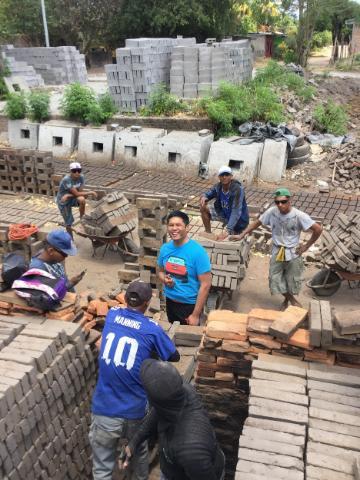It may very well be that the project that you and your team have is not intended for application on a societal scale-- a motorized wheelchair, for example, wouldn’t be produced on a 1:1 ratio, as not everyone in society will need it. Engineering with the common good in mind, however, places more emphasis on how the benefits produced by your design can be accessed by as many members of society as possible. While it may be that not everyone in a society would need a wheelchair, a common good approach would aim to determine what the cost, functionalities, and production quantity of the wheelchair would be most appropriate to make the design accessible to the widest demographic of disabled persons in need of the wheelchair.
The ethical impact assessment phase of design evaluates the purpose behind the design and examines the potential effects of its deployment in the target community. Impact assessment can be best understood as comparing the “intent” of your project versus the “impact”, as it compares the good that you and your design team intends for your customer to the way in which the design contributes to this notion of a common good in society. This common good is what ethicists relate to as “certain general conditions that are… equally to everyone’s advantage”(John Rawls in Velasquez et. al, 1992) [1].
So, what is a “community”?
When speaking of the common good, it may be confusing to see why community and society at large are referred to in the same way. A community, in the context of design work, is the people your design is directly intended to serve. This means that the definition of a target community is dependent on the scope of the application of the design solution. While the design of a manual clay brick press is intended to serve clay brick makers, the design for a public library or swimming pool can benefit as many people as a city or as few people as a neighborhood.
The common good comes into play when assessing how these design solutions, when implemented, create direct and indirect benefits that can be enjoyed beyond your target community. The installation of a public library or swimming pool can contribute to safe study and recreation for a large number of people, which is a positive social impact that goes beyond their main functions. For the design of the Frugal Clay Press for Nicaragua, which was my senior design project, implementation of the press had the potential of expanding employment opportunities to the larger community of Ciudad Darío. Considerations of how benefits of your design solution can go beyond your target community are part of factoring in the common good.
There are many dimensions of impact that your project may have in your intended target community and society at large. In my experience working with the Frugal Clay Press for Nicaragua design team, we entered the project expecting our device to have a largely economic impact for the brick making social entrepreneurship in Nicaragua. This was because we believed that an increased throughput of clay bricks would mean increased income for the community. Upon visiting Ciudad Darío in March of 2018, however, our team discovered that our design would have an even broader reach in the community, as the design had the potential to reduce water usage in the clay mixing processes and increase employment opportunities.
As you and your team come to the end of your senior design project, it is not enough to see if your design works for the completion of your senior thesis. Your team must also have a deep understanding of the dimensions of societal impact that the implementation of your design may have, and why these must be considered before deployment. We will discuss how addressing the economic, environmental, sustainability, health and safety, social, as well as political impacts of your design are important in designing with the common good in mind, as well as how these elements were important in my experience with the Frugal Clay Press for Nicaragua senior design project.
Environmental & Sustainability Impact
Part of assessing how your project contributes to the common good is understanding how the implementation of your design would positively impact the community environment and sustainability. This is relevant to the common good, as the environment is something to be both cared for and enjoyed by society at large.
Environmental and sustainability considerations that can come up in your design project include:
Reducing waste production/pollution:
- Design solutions that contribute to the reduction of waste production and pollution often emphasize the use of biodegradable, recyclable, or otherwise reusable building materials. Ensuring that your design components and products are able to be repurposed and will not become landfill contributes to overall environmental wellness.
Energy conservation and energy renewal:
- Energy usage is a significant part of any community. What differs, however, is what forms of energy are readily available to the community at large. The energy sources that your design solution depend on are important to consider as this can determine to what extent the design can provide benefits to as many members of the community as possible.
Availability of food and natural resources:
- Technology in the modern age has a significant impact on how community members access food, water, gas, and other natural resources. Irrigation systems, vertical farming, and plumbing systems are solutions that rely on engineering design to produce goods for societal application. If your project has direct impact on how people access food and natural resources, it is important to consider if the design makes this process easier and more sustainable for society.
Personal Link
Employees of Ladería y Bloquera San Pedro, the clay brick manufacturing entrepreneurship I partnered with in the senior design project, were trained to use a shockingly high amount of water to mix clay on a daily basis. Drier clay was difficult for the workers to mix by hands and feet. To make it possible for the workers to mix different soils, sawdust, and sand into their clay, workers would often leave a hose running on top of a mound of the mix for hours at a time. This produced a very muddy, oversaturated clay that was easier to mix, but made it impossible for newly formed bricks to retain their shape after being molded in a wooden mold. This also made it so that newly formed bricks would have to dry for nearly a week before being baked, which was a significant lead time for the community that limited their capacity for greater income.

Figure 2: The watering of the clay brick mixture made in Nicaragua. The hose pictured below was left to run for hours at a time, which allowed the clay to reach a consistency that made it easier for them to mix and move into wooden brick molds.
In our clay testing at Santa Clara University, we determined that compression with our device produced bricks that were not only stronger and denser than bricks formed by a wooden mold, but relied on much less water to form bricks. Through our calculations, we found that our device would allow the community to cut the amount of water used for their clay by up to 25% and save them, on average, 186 gallons of water a day. This established value in our conceptual design for the community, as the owner of the clay brick manufacturing entrepreneurship remarked that water usage was their largest expense in operation. Moreover, the reduction of water usage would improve the sustainability of their brick mixing processes, allowing for more potable water to be available for other residents of Ciudad Darío.
Societal Health & Safety Impact
Another dimension of the common good is community health and safety. This is including and not limited to pollution, sanitation services, and housing solutions. You and your design team should consider how your design solution makes living in society a healthier and safer experience for as many members of society as possible.
Health and safety considerations that can come up in your design project include:
Disease control:
- Engineering design solutions that look to prevent the spread of infectious disease also contribute to societal health and safety. Products such as malaria nets and vaccines against STIs have had significant impacts in the communities they are deployed to because they allow people to feel safer against disease.
Healthcare and standard of living:
- If your project focuses on how to increase public access to medical supplies and services in your target community, the common good is especially relevant because community health plays a significant role in how individuals experience society. Projects concerned with healthcare and medical applications especially should consider to what extent the benefits produced by the design will be made available to members across society.
- Engineering design also can have a significant influence on a community’s standard of living, or the individual’s ability to access amenities and material wealth. Technology can raise the standard of living by making the process of producing or accessing these things faster and more affordable for a larger demographic, such as how the Hippo Roller allows rural women in Africa to more easily retrieve potable water for their communities.
Personal Link:
While my design project didn’t produce a widely accessible benefit with regard to societal health and safety, one feature of our design solution was intended to improve the health of the community clay workers. In Ciudad Darío, the clay workers of our partnered social entrepreneurship Ladrería y Bloquera San Pedro were trained to form clay bricks using wet clay and wooden molds. The clay that they used to make the bricks was intentionally made very wet, which allowed the workers to easily mix the clay and move clay into the wooden molds. These processes, however, were physically intensive. Brick forming, especially, required men to be squatting on the floor for hours at a time to properly form the clay bricks using the wooden molds. The men work barefoot and often in high humidity and heat, which further adds to the physical difficulty that is associated with clay brick making.

Figure 1: A clay brick maker in Nicaragua forming clay using the wooden mold.
To address this, my design team wanted to make it possible for all brick forming processes to be done in standing position. Our device was designed to allow clay workers to load clay into a clay compression chamber and compress the clay into shape with a compound lever system. These operations were designed to be done from chest height to slightly below the waist of a worker. This range of motion was determined to be accessible for workers of heights from 5’ to 6’, allowing them to complete all tasks in standing position without reaching higher than one’s head or lower than one’s waist. In our prototype operation tests, all team members of my design team were able to operate the press without moving outside of this range of motion. We found that if a clay worker were to use our press for the same amount of time during the work day in Nicaragua, it would be significantly less taxing on the body, as the workers would no longer have to work from a squatting position.
Social, Political, & Economic Impact
Finally, your design solution may have an impact on the social and political environment of your target community. Depending on where you are in the world, the introduction of new technology or products in the market can have a sizeable economic impact in the community. This allows owners of engineered technology to be able to use design solutions as tools for profit in business. Additionally, technology that better helps communication, participation, law enforcement, and interactions in society overall can contribute to a better experience for community members. Translation apps, security cameras, and social media are a few technologies that are used that broadly impact society today. It is important to consider, however, how these design solutions can contribute to a common harm, as opposed to extending a benefit across society.
Community social and political considerations that can come up in your design project include:
Effects on local market/economy:
- Engineering products can have significant effects in the community that they are deployed to. When these products are effective, it may benefit your customer, but may wipe out all other existing technological competition produced and sold by the community.
- What individual(s), businesses, or other segments of the community benefit from your design are also worth considering-- in order for the product to be considered for the common good, the people that benefit from your design should also provide goods or services that benefit society as a whole.
Effects on local businesses & employment:
- Technology will always concern people who feel like they will be “put out of work”. If a design solution accomplishes a traditionally human task, this can take profits away from local businesses, small or large, that positively impact the community/society as a whole.
- Technology may also provide increased opportunities for employment. Additionally, technology may require special training to operate. If this is a feature of your design, it is worth looking into what skills are needed to operate your design and how these skills can contribute to paid, specialized labor in the community.
Criminal activity and public safety:
- Technology that helps prevent, detect, or otherwise stop criminal activity contributes to the common good in the sense that it assists law enforcement in upholding laws and restrictions that concern the rights and safety of the public. On the other hand, it is necessary to realize that in order for these tools to be considered a common good, they must be applied fairly and without compromising the individual rights of innocent people.
- With this in mind, technology can also be used to break laws and restrictions and have a negative effect in society. It is important to consider how your design can be manipulated against the common good by providing people with tools to which to compromise the safety of others in society.
Employment:
- Another common good that can be related to engineering work is employment. When an engineering project or product is able to produce jobs or make work easier in a community, it produces benefits that can potentially benefit the community at large. Considering how your project can widen employment opportunities in your community is part of assessing the social dimensions of your design.
Personal and national security:
- Community safety is a common good, allowing people to enjoy life without fear of harm from members inside and outside of the community. Technologies that help individuals feel safer within their community, such as pepper spray, location services, and ride sharing apps, have a positive impact on one’s experience in society. Considering how the implementation of your design can provide someone with safety or security in society is another key aspect of ethical impact assessment.
- Similarly, elements of your design project may have the potential to influence how people preserve national security. Whether it be a matter of military defense, government intelligence, or disease control, considering how your design can be used to contribute to a greater sense of national security is part of considering the common good in the design process.
Personal Link
During my visit to Ciudad Darío in the spring of 2018, I was able to work alongside the employees of Ladería y Bloquera San Pedro, the social entrepreneurship that was our target community for the senior design project. I spent a few hours of the day with another member of my design team conducting participant observation in the clay mixing, brick forming, and brick baking processes. Through detailing our design in our interviews with the owner of the social entrepreneurship, we established confidence in our project because clay compression would allow for the community to save money on water usage and sell more bricks.

Figure 1: Me, alongside a handful of the clay workers in Ciudad Darío, learning how to operate their clay oven.
As I worked alongside one of the clay workers one day, however, I was surprised to be asked by a boy roughly 17 years of age if our press was going to take away their jobs. The boy, as well as other employees of the entrepreneurship, thought that the success of our design would mean that the owner could spend less money hiring workers and more on implementing the press. When we brought this concern to the owner, however, we learned that his plans were quite the opposite. Because the use of our press could potentially reduce the drying time the bricks needed before baking, there would be more room in the brick fields for newly compressed bricks to be stacked. The increased throughput of clay bricks from the oven and the press would require the owner to hire more workers to be available to mix the clay, form bricks, and operate the oven, thus increasing employment opportunities. This was significant because the people of Ciudad Darío rarely are able to find local labor, and often have to spend a significant amount of money and risk their safety to work in the bigger cities.
References:
[1] Velasquez, Manuel, et al. “The Common Good.” Markkula Center for Applied Ethics, Markkula Center for Applied Ethics, 2 Aug. 2014.
[2] Velasquez, Manuel, et al. “A Framework for Ethical Decision Making.” Markkula Center for Applied Ethics, Markkula Center for Applied Ethics, 1 Aug. 2015.
